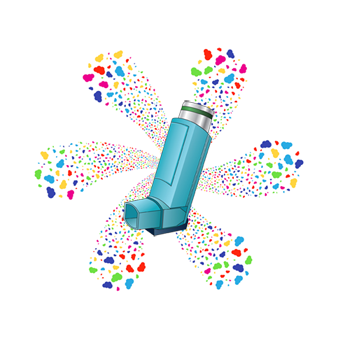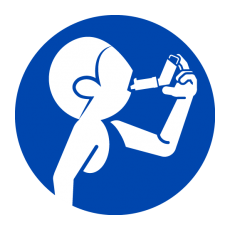The Subbarao Lab facilities support translational science by integrating clinical research in lung function testing, wet lab for processing of biological specimens, and a dry lab for biostatistics and epidemiology.
Research pursued in the Subbarao Lab is varies. The Lab actively contributes research to, and leverages the data from, clinical studies such as The CHILD Cohort Study. The Lab is also participating in numerous research projects supported by various granting agencies. Among these, most central to the Lab’s current work is the project “Disentangling ChildHOOD Asthma,” supported by Dr. Subbarao’s Tier 1 Canada Research Chair in Paediatric Asthma and Lung Health (2020-2027). The Lab’s capabilities in conducting specialized lung function tests figures centrally in its contributions to research across these projects and clinical studies.
Specialized lung function measures and clinical assessments are performed on children of all ages by clinical and research personnel.
Multidisciplinary training to facilitate team science: Trainees in the Subbarao Lab come from diverse backgrounds in medicine, physiology, biostatistics and epidemiology. They interact collaboratively with clinical staff and other labs in order to achieve integrated multidisciplinary research projects. Students of all backgrounds are encouraged to expand their training in all parts of the research program from clinical assessment to statistical analyses.

Canada Research Chair in Paediatric Asthma and Lung Health (2020-2027)
PI: Dr. Subbarao
Dr. Subbarao’s world-leading research program, supported by her Tier 1 Canada Research Chair in Paediatric Asthma and Lung Health (2020-2027), aims to disentangle preschool wheeze syndromes, provide tools for use in infants to precisely diagnose asthma subtype, monitor lung growth and response to therapy at the individual level and provide novel insights into the risk and protective factors associated with each asthma subtype. The discovery of novel causal associations will be further explored through targeted translational research collaborations paving the way for novel prevention strategies to eradicate asthma subtypes with precision.
Asthma affects 1 in 7 children leading to poor lung growth, cardiovascular disease and premature death. Current therapies, effective at controlling symptoms, do not prevent the lung function loss associated with asthma. Dr. Subbarao’s program integrates longitudinal lung function measures from infancy, with genetics and exposure measurement to impact standard clinical care of paediatric asthma. Her transformative program will (1) Develop tools to diagnose asthma subtype from infancy. (2) Identify causal risk factors associated with each asthma subtype to develop prevention strategies. (3) Produce lung function tests to monitor therapy aimed at preserving lung function from infancy.
The Subbarao Lab facilities include a clinical research laboratory for lung function, where specialized lung function measures and clinical assessments are performed in children of all ages by clinical personnel and research assistants.
The lung function tests performed in the Subbarao Lab are categorized as tests for infants only (Infant Pulmonary Function Test); tests for school-aged children only (spirometry, Forced Oscillation Technique); and tests for both infants and school-aged children (Multiple Breath Washout, Exhaled Nitric Oxide).
The Subbarao Lab participates in numerous research projects supported by various granting agencies.
The table below lists research projects in which the Subbarao Lab is currently participating. It can be searched, or sorted by any column.
| Duration | Title | Funding source | PI(s) | Amount |
|---|---|---|---|---|
| 2020-2027 | Disentangling Asthma Subtypes | Canada Research Chair in Pediatric Asthma and Lung Health - Tier 1 | Padmaja Subbarao | $1,400,000 |
| 2020-2021 | Rapid research in the CHILD Cohort to inform Canada's response to the COVID-19 pandemic: investigating the prevalence and predictors of SARS-CoV-2 infection, and the health and psychosocial impact of the COVID-19 pandemic on Canadian families | CIHR-Op Grant: COVID-19 Rapid Research FO - Social Policy and Public Health Responses | Meghan Azad, Piush Mandhane, Theo Moraes, Padmaja Subbarao, Stuart E Turvey. | $1,589,795 |
| 2020-2024 | Causational Roles of the Gut Microbiome in Childhood Asthma: Leveraging the CHILD Cohort Study | CIHR Team Grant: Canadian Microbiome Initiative 2: Research Teams. | Padmaja Subbarao, Meghan Azad, Qingling Duan, Jeremy A Hirota, Anita L Kozyrskyj, Wen-Yi W Lou, Kelly M McNagny, Michael G Surette, Stuart E Turvey. | $2,000,000 |
| 2019-2022 | CHILDhood Asthma and Puberty: Understanding the Sex Shift in Asthma to Female Predominance | CIHR Project Grant | Allan B Becker, Meghan Azad | $1,220,940 |
| 2018-2022 | Precision health for life: The Canadian Healthy Infant Longitudinal Development (CHILD) study | Genome Canada: Large-Scale Applied Research Project (LSARP) competition: Genomics & Precision Health | Stuart Turvey | $10,000,000 |
| 2018-2022 | A genome-wide association study of dysanapsis | CIHR Project grant | Benjamin M Smith, Qingling Duan | $240,000 |
| 2016-2021 | CANadian Urban Environmental (CANUE) | CIHR. Health Research Consortium | Jeffrey Brook, Phillip Awadalla, Kimberlyn McGrail, Michael Brauer, Howard Hu, David Stieb | $4,165,000 |
| 2016-2021 | Genes by environment interactions in the development of non-communicable chronic respiratory diseases, asthma and COPD | CIHR. Programmatic Grants in Environments, Genes and Chronic Disease | Jeffrey R. Brook, Russell J. De Souza, Qingling Duan, Anita Kozyrkskyj, Wen-Yi Lou, Michael Surette | $1,953,002 |
| 2016-2021 | Deciphering the metabolic signatures of the metabolic syndrome (MetS) in young children. DoHAD Team Grant. | CIHR – Implications for Men, Women Boys and Girls – Full Application | Sonia Anand, Joseph Beyene, Philip Britz-Mckibbin, Russell J. De Souza, Guillaume Paré | $1,498,268 |
| 2016 – 2021 | Programmatic research to understand how modifiable environmental factors interact with the genome in the development of asthma | CIHR. Programmatic Grants in Environments, Genes and Chronic Disease – Full Application | Stuart Turvey, Jeffrey Brook, Michael S. Kobor | $1,675,435 |
| 2016 – 2021 | Research Advancement through Cohort Cataloguing and Hamonization (ReACH) | CIHR – Operating Grant: DOHaD Cohort Registry | Stephanie Atkinson, Alan Bocking, Vincent Ferretti, Isabel Fortier and William Fraser | $780,000 |


